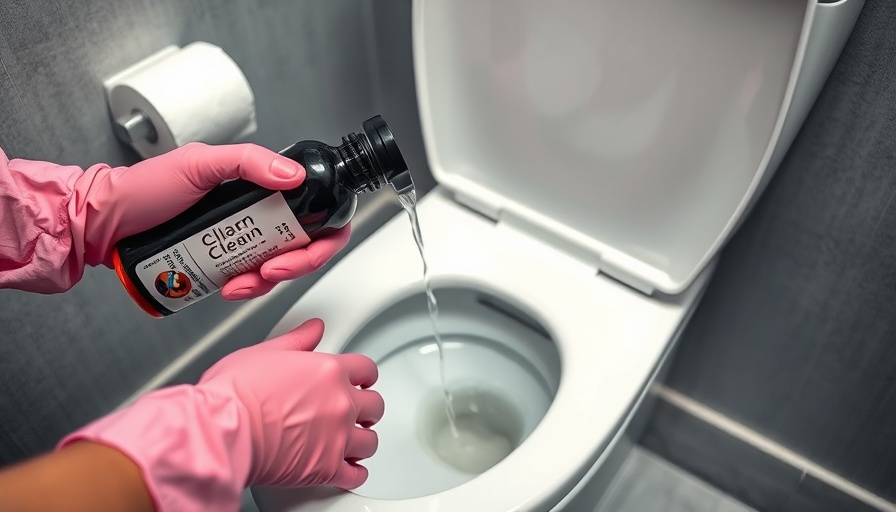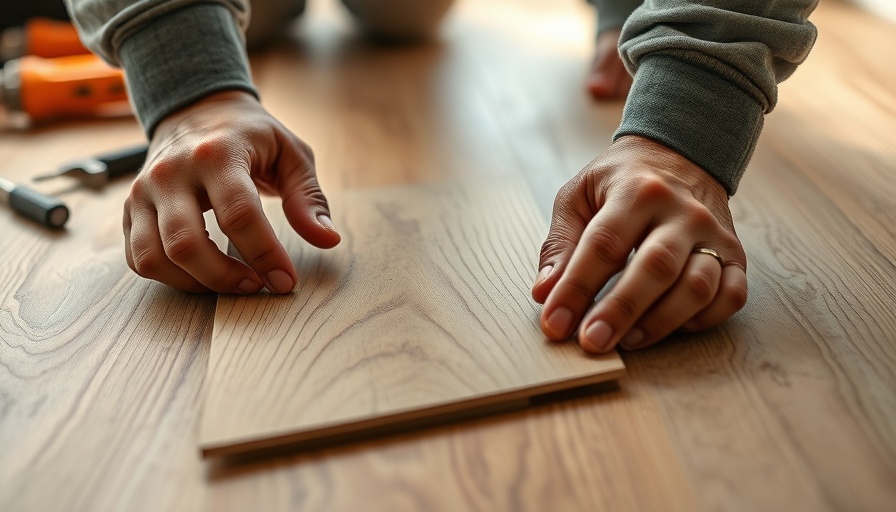
Revolutionizing Toilet Maintenance: The No-Mess Hack
Unclogging a toilet is an unavoidable home maintenance task that none of us relish. It’s a situation most homeowners dread, from the unpleasant odours to the potential for creating a huge mess. But what if there was a way to make this dirty job cleaner and easier? Thanks to a clever garbage bag trick, plunging your toilet can be less of a hassle and more of a breeze. This pragmatic hack not only keeps your bathroom cleaner but also minimizes the risk of spreading harmful bacteria like E. coli and salmonella.
Understanding the Bathroom's Bacterial Dilemma
When a toilet backs up, the last thing on your mind is cleanliness, but the reality is that toilet water can contain a multitude of bacteria. Splash-back during traditional plunging can lead to contamination on surfaces and your hands, which is why managing the mess effectively is of utmost importance. Homeowners seeking to maintain a hygienic environment must prioritize cleanliness, particularly in spaces as frequently used as bathrooms.
The Garbage Bag Plunger Hack Explained
This no-mess method is straightforward and only requires a few materials you already have at home. Start by grabbing a sturdy garbage bag that’s large enough to drape over the toilet bowl. Cut a small hole in the center, just wide enough to fit the handle of your plunger. Once your plunger is inserted, drape the bag over the toilet seat, encasing the bowl. As you plunge, the bag catches any splashes, keeping your space clean and free of bacteria-laden water. After plunging, just remove the bag, ensuring the messy side is folded inward, and dispose of it with ease. It’s a simple solution that can save you from the icky consequences of a plumbing snafu.
Alternative Methods for Toilet Unclogging
While the garbage bag trick is top-notch for minimizing splatter, there are other methods to consider if you find yourself without a plunger. One effective technique involves using hot water and dish soap. By squirting a generous amount of dish soap into the bowl and letting it sit for several minutes, you can soften the clog. After that, pour a bucket of hot (not boiling) water from waist level into the toilet. This combination works to break down the blockage effectively.
Another popular option is the classic baking soda and vinegar method. Pour one cup of baking soda followed by two cups of vinegar into the bowl. The fizzing reaction helps to dislodge the clog, and after letting it sit for about 30 minutes, flushing with hot water can clear the blockage.
When to Call in the Pros
Sometime, despite the at-home hacks, you might encounter a particularly stubborn clog that requires professional intervention. If your DIY efforts fail to yield results or if you're worried about damaging your toilet with rigorous plunging, contacting a plumber might just be the best option. Remember, the cost of a service call pales in comparison to the expenses associated with a potential toilet repair.
Creative Home Maintenance Solutions
This toilet plunging hack is just one of many ingenious home maintenance techniques you can adopt. Keeping a clean and functional home often involves simplifying challenging tasks. Exploring creative home hacks not only aids in daily chores but also cultivates a proactive approach to home upkeep. As homeowners, empowering yourself with knowledge about household management leads to a cleaner, healthier living environment.
For the DIY Enthusiast: Take Action!
It’s clear that managing a clogged toilet doesn’t have to be a messy experience. By employing the garbage bag trick and trying out some alternative unclogging methods, you’ll be equipped to tackle one of homeownership’s less glamorous aspects with confidence. Why not give these methods a try next time you encounter toilet troubles? Your bathroom will thank you!
 Add Row
Add Row  Add
Add 




Write A Comment